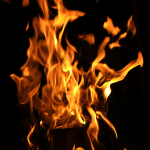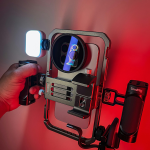Table of contents [Show]
- Introduction
- What Is an Extreme Heatwave?
- 1. Stay Hydrated Like It’s Your Job
- 2. Dress Light and Loose
- 3. Keep Your Home Cool and Safe
- 4. Limit Outdoor Activities
- 5. Check On Vulnerable Family Members
- 6. Don’t Forget Your Pets
- 7. Know the Signs of Heatstroke and Act Fast
- 8. Prepare a Summer Emergency Kit
- Final Thought
Introduction
The U.S. is experiencing record-breaking temperatures, and with more extreme heatwaves on the rise, knowing how to stay cool and safe during summer is more important than ever. Whether you're living in a scorching city or dealing with humidity in the suburbs, this guide provides essential extreme heatwave safety tips USA residents need to follow to avoid heat exhaustion, dehydration, and dangerous health risks.
At Trendy Micho, we care about lifestyle, wellness, and safety—especially during extreme weather events. Let’s walk through the must-know strategies to protect yourself, your loved ones, and your pets when the heat is on.
What Is an Extreme Heatwave?
An extreme heatwave is a prolonged period of excessive heat, often combined with high humidity, that can pose serious health risks—especially to children, seniors, and people with chronic conditions.
According to the National Weather Service (NWS), extreme heat is the leading cause of weather-related deaths in the U.S. That’s why heatwave safety tips are not just helpful—they’re life-saving.
1. Stay Hydrated Like It’s Your Job
Why it matters: During a heatwave, your body loses more water through sweat. Dehydration can lead to dizziness, headaches, and even heatstroke.
What to do:
- Drink water every 15–30 minutes, even if you're not thirsty
- Avoid alcohol, caffeine, and sugary drinks—they speed up dehydration
- Carry a reusable water bottle wherever you go
Trendy Micho Tip : Add a pinch of sea salt or a splash of coconut water to restore electrolytes naturally.
2. Dress Light and Loose
Your clothing matters more than you think. The right outfit can lower your body temperature and keep you comfortable in dangerous heat.
Best options:
- Light-colored, breathable fabrics like cotton or linen
- Loose-fitting clothes that allow airflow
- A wide-brimmed hat and UV-protection sunglasses
Avoid dark colors and synthetic fabrics—they trap heat and make you sweat more.
3. Keep Your Home Cool and Safe
If you don't have central AC, use smart hacks to beat the heat indoors.
Home safety tips during a USA heatwave:
- Keep curtains/blinds closed from 10 AM to 5 PM
- Use fans strategically to move air—not just blow hot air
- Place a bowl of ice in front of the fan for a DIY air chiller
- Avoid using ovens, stoves, or dryers during peak heat hours
If your home becomes dangerously hot, know where your local cooling centers are located.
4. Limit Outdoor Activities
Timing is everything. If you must go outside, avoid the hottest part of the day—usually between 11 AM and 4 PM.
If you're outdoors:
- Take frequent breaks in the shade
- Use SPF 30+ sunscreen every 2 hours
- Carry water and avoid overexertion
- Don’t leave kids, pets, or elderly people in parked cars—even for a minute
5. Check On Vulnerable Family Members
Extreme heat can be especially dangerous for seniors, children, and people with health conditions.
Do this regularly:
- Call or visit elderly neighbors and relatives
- Make sure they’re drinking water and staying cool
- Encourage them to stay indoors during peak hours
Heat-related illnesses can creep up fast—early warning signs include confusion, nausea, or rapid heartbeat.
6. Don’t Forget Your Pets
Your furry friends need protection too.
Pet heat safety tips:
- Walk pets early morning or late evening
- Always provide cool, clean water
- Keep them indoors with fans or AC
- Never shave double-coated breeds—fur helps regulate temperature
- Never leave pets in cars, even with the windows cracked
7. Know the Signs of Heatstroke and Act Fast
Extreme heat can lead to heat exhaustion or heatstroke, which are medical emergencies.
Watch for symptoms:
- Excessive sweating or no sweating at all
- Dizziness or fainting
- High body temperature (above 103°F)
- Confusion, rapid pulse, or nausea
What to do: Move the person to a cool place, use cold compresses, give water (if conscious), and call 911 immediately if signs are severe.
8. Prepare a Summer Emergency Kit
Prepare in advance for heatwave emergencies, especially in areas prone to power outages.
Your emergency kit should include:
- Bottled water (one gallon per person per day)
- Cooling towels and handheld fans
- Ice packs and a cooler
- Battery-powered or rechargeable fans
- Flashlights and extra batteries
- First-aid supplies
Trendy Micho Reminder : It’s always better to be safe than sorry—heatwaves can escalate quickly.
Final Thought
With record-breaking heatwaves sweeping across the USA, it’s not enough to hope for cooler days—you need a plan to stay safe, cool, and healthy. These extreme heatwave safety tips USA residents must follow aren’t just for comfort—they’re for survival.
At Trendy Micho, we’re committed to keeping you informed and prepared, no matter the season. Stay hydrated, stay cool, and stay smart—because summer should be about fun, not emergency rooms.
Dear Trendy Micho Readers,
We hope this blog brought you joy and knowledge.
Thank you for visiting Trendy Micho!
Feel free to share it with friends and family.
May God bless you with health and happiness.
 हिन्दी
हिन्दी 














